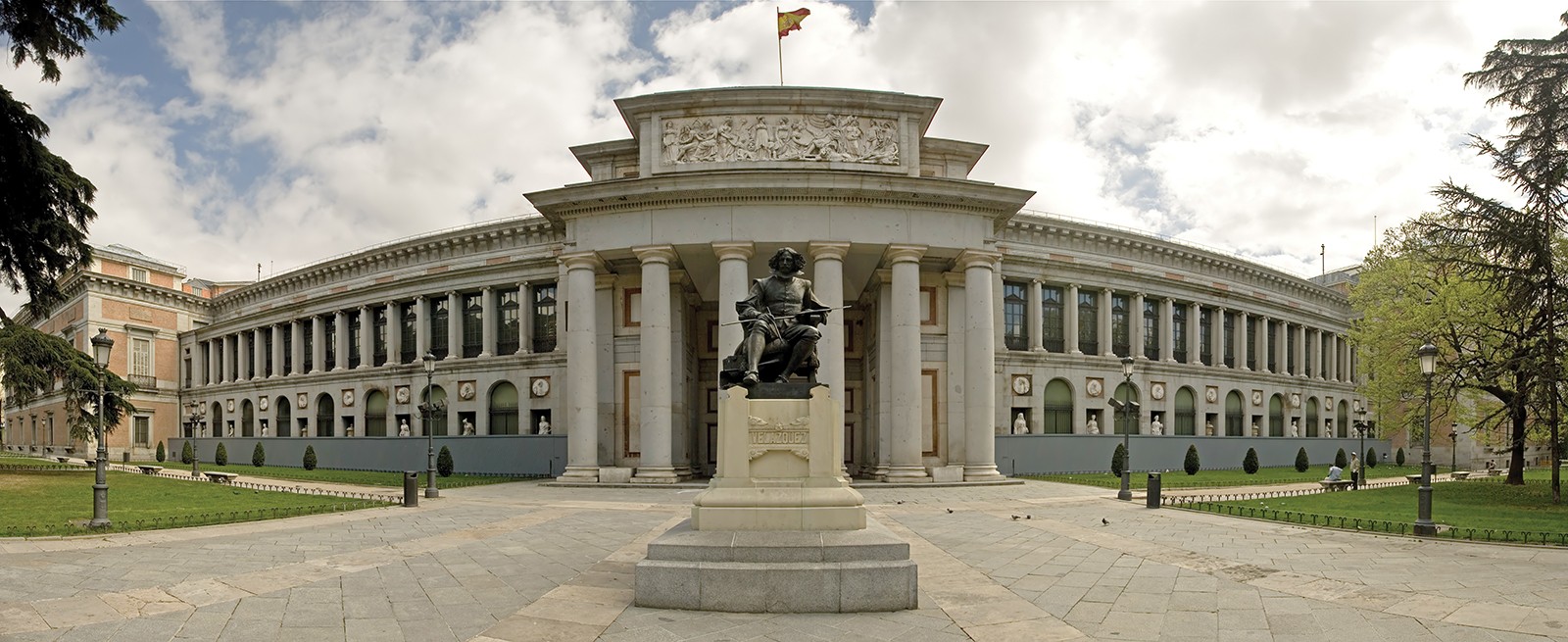The Prado Museum officially known as Museo Nacional del Prado is quite an honorable place among other famous European museums. There are various reproductions of paintings, which annually attract hundreds of tourists.
Also, nobody is left indifferent to the strict elegance of the interiors of this museum in Madrid. The Prado Museum has over 8,000 paintings and over 400 sculptures. The exhibition areas of the museum allow showing no more than 2 thousand paintings and about a hundred sculptures. Everything else is kept in storage and exhibited rarely, in special halls. To see everything is not enough just a tour of the museum. That’s why the keepers came up with a “hint” for all visitors. In the free map of the museum, which is received by every visitor, there is a description of masterpieces for a mandatory inspection. The map shows the way to all paintings.
You can trust the professionals of the museum, or you can study the scheme by yourself and choose the halls with the most interesting exhibits.
History of the Prado Museum
This museum was opened in far 1819. At the beginning of its work here were exhibited collections of paintings collected by the Spanish monarchs. The collection of paintings took place over three centuries, so the collection could be called large.
Paintings collected in the Prado Museum were used to decorate chapels in churches and royal palaces, but already in the 16th century Spain began to expand cultural ties with other European countries, so the king of Spain Charles V began to actively buy paintings by artists from all over Europe. He also placed orders with the most famous masters of that time.
The king’s collecting was continued by his son, Philip II. He expanded his father’s collection of paintings and also rebuilt the Prado Palace for his wife.
Philip II ordered from Titian and Hieronymus Bosch. In this way, the most famous painting by the last artist, The Garden of Earthly Delights, was housed in this museum.
After Philip II, the museum was filled by Philip IV. He purchased paintings by Veronese, Tintoretto, and Bassano. They still decorate the walls of this famous museum in Madrid.
The Garden of Love, 1610 by Peter Paul Rubens

In 1628 the Spanish capital was visited by the famous artist Rubens, who, despite his work as a diplomat, continued to paint.
Some of his works were immediately purchased by the monarch. Among the paintings were “The Garden of Love”, “Three Graces” and several others.
In the XVIII century, Spanish society began to be interested in the natural sciences. That’s why the authorities decided to remake the Prado Museum.
In 1785, for the construction of a new museum was given a place in the park of the same name, but the building was never built. This was hindered by political events in the country, and then by the invasion of Napoleon.
Only in 1814 began the new construction of the museum, as the old building was seriously damaged by the French Army.
It should be noted that at first there were only 311 works in this museum. They tried to choose only the best works, and for the exposition of the museum were not selected paintings with nude nature.
Gradually, the number of paintings began to increase due to works from local monasteries. In 1868 it became a city museum. In 1927, César Antonio Molina gave the Prado Museum a painting “St. John the Evangelist” by El Greco.
Unfortunately, the Prado Museum had a difficult fate waiting for it. In August 1936, it was closed because of the Civil War, which broke out in Spain. All the paintings managed to hide in Switzerland.
Only in 1939, the museum was open to all comers, but not all of the paintings were exhibited, as some of them continued to be stored in Geneva.
In 1971 in the building of Cason del Buen Retiro was opened a new branch of the museum, where you can now consider the works of Spanish painters, dating from the XIX century.
The Prado Museum exhibits
The Prado Museum Gallery now has over 8600 works by various artists. Despite the fact that the museum has been constantly expanding, some of the paintings are kept in the basements of the building. According to rough estimates, visitors to the museum can see only 200 works.
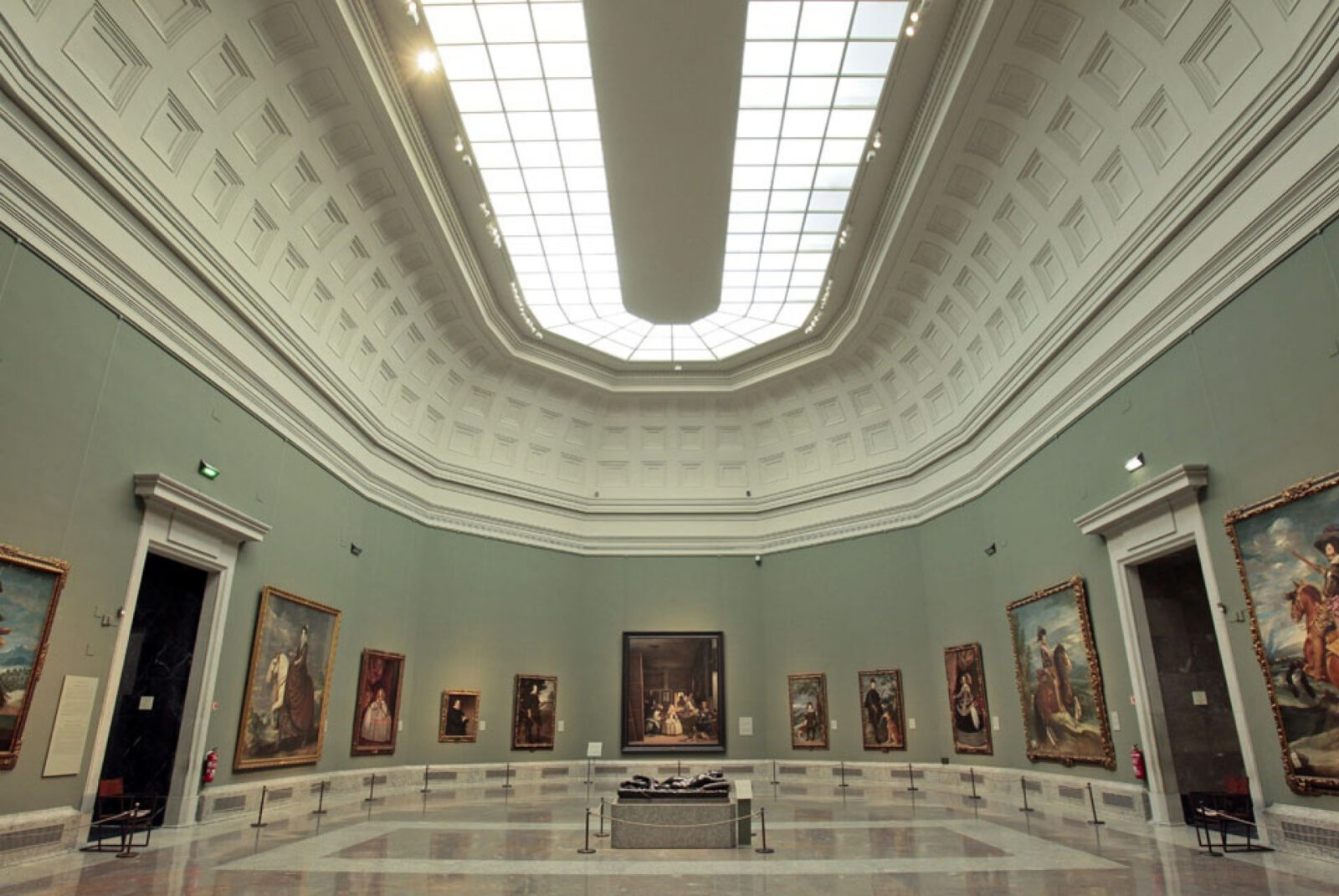
Prado Museum Gallery
In the branch of the museum, which was founded in the building of Cason del Buen Retiro behind the main structure, you can see the artworks of Spanish artists and sculptors of the XIX century. In addition, some works by French and English masters are on display there.
Visitors can also see works by primitivists and representatives of the Renaissance period of the 15th and 16th centuries, Bosch and Dürer, the Italian school of masters of the 15th and 17th centuries, Rafael and Titian, the Spanish school of artists of the 16th and 18th centuries, Velázquez and El Greco and much more.
If you want to get a full picture of the museum’s collection, you should not only look at the exhibition housed in the central house (works from the Middle Ages to the 18th century), but also see the Palazzo Villahermosa, where the excellent collection of Thyssen-Bornemisza is presented, and go to Casson del Bueno-Retiro, located on Via Philippe IV. There are works by Spanish painters as well as sculptors whose works date back to the 19th century.
The Museo del Prado in Madrid has the most complete collection of paintings that belong to famous masterpieces. Here you can see the works of Berrughete, Ribera, Surbaran, Murillo, the best paintings of Velazquez (“The surrender of Breda“, “Las Meninas”, “The Lunch”, “The Family of Philip IV”) and Goya (among them a picture of the King Charles IV’ family, several portraits of royal jesters, as well as a canvas depicting the shooting of the night from 2 to 3 May 1808, and some other paintings).
The Dutch School of Painters is represented in the museum by the works of Rogier van der Weiden, Bosch, Bruegel, and Memling. Also not to be missed paintings by Italian masters: Fra Angelico, Botticelli, Titian, Giorgione, Tintoretto.
In addition to paintings, tourists can find in the Prado Museum collections of ancient jewelry and coins, which were once on the move in Spain.
There are several works in the museum that are difficult to get to because of the constant crowd of people willing to see them.
Las Meninas (1656), by Velazquez

Las Meninas, painted by Diego Velazquez in 1656, is one of the most famous paintings in the Museo del Prado and possibly the world over, depicting the Philip IV’ royal family. The painting depicts the Infanta Margarita Teresa and her entourage. Velazquez is one of the most respected Spanish artists in art history. The Prado also owns fifty of the famous 140 paintings by Diego Velázquez, which means the museum has the largest collection of painters in the world.
“The Garden of Earthly Delights” Hieronymus Bosch
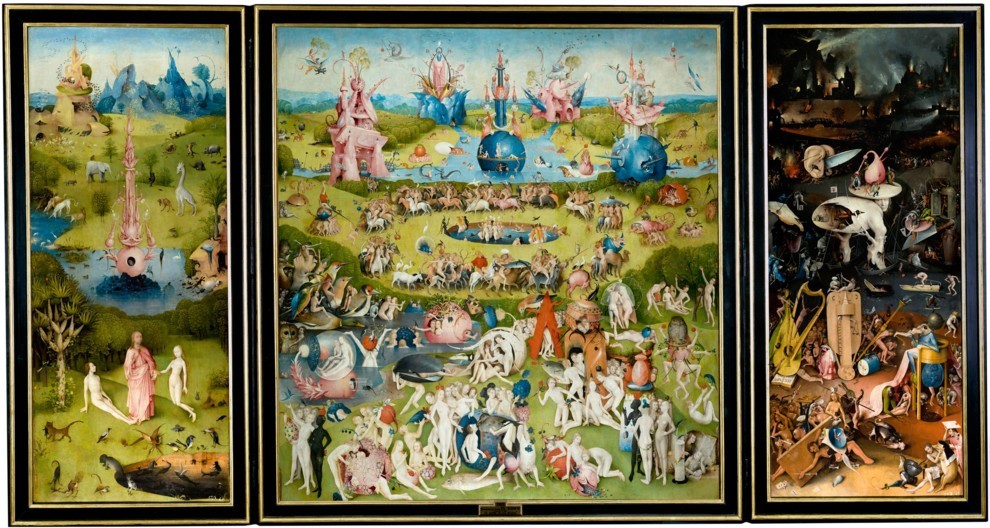
Also one of the most famous paintings in the Prado Museum is “The Garden of earthly delights” by Hieronymus Bosch, which has been there since 1939. This triptych depicts the joy and horror of the temptations of life. The left panel depicts the story of Adam and Eve, while the middle panel shows a garden full of nude figures, plants, and fruits, a scene of carefree joy. The right panel coldly depicts the eternal curse – the punishment for all the fun in the center of the painting. It is noteworthy that Bosch has almost never signed his works, apart from only seven of them – among which is the “Garden of earthly delights”. It dates from the late 1400s.
Self Portrait (1498) by Albrecht Durer
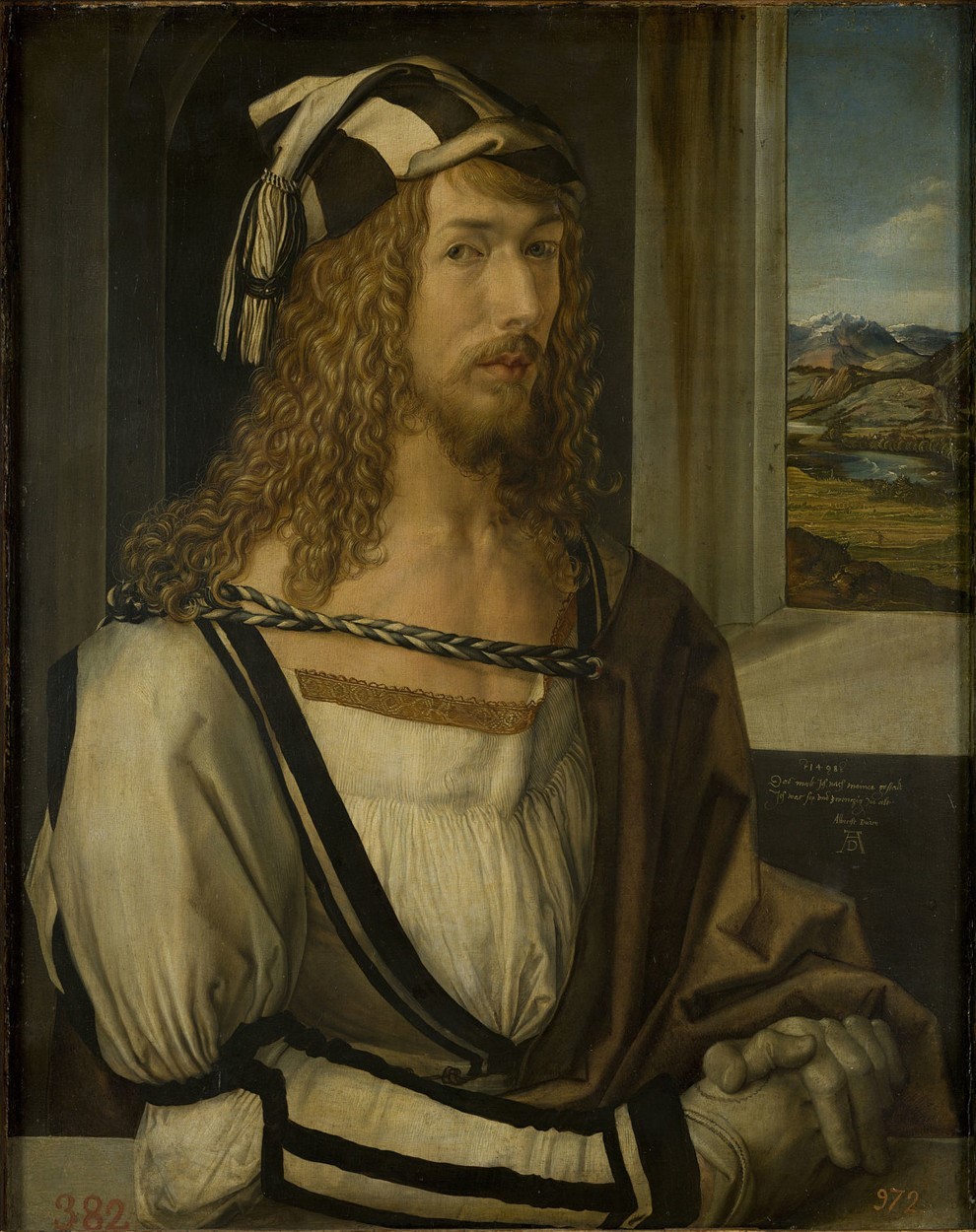
Although it is one of Dürer’s many self-portraits, this version of 1498 shows him as a nobleman, not an artist. He sits in a pose usually intended for members of high society. He is also wearing kidskin gloves, a luxury usually intended for the wealthiest classes. Durer also documents the transformation that took place during the Renaissance. The artists have moved from humble masters to higher social status. Consequently, Dürer put his signature visibly under the window. He clearly accepted this new position.
“The Portrait of a Cardinal ” by Raphael Santi
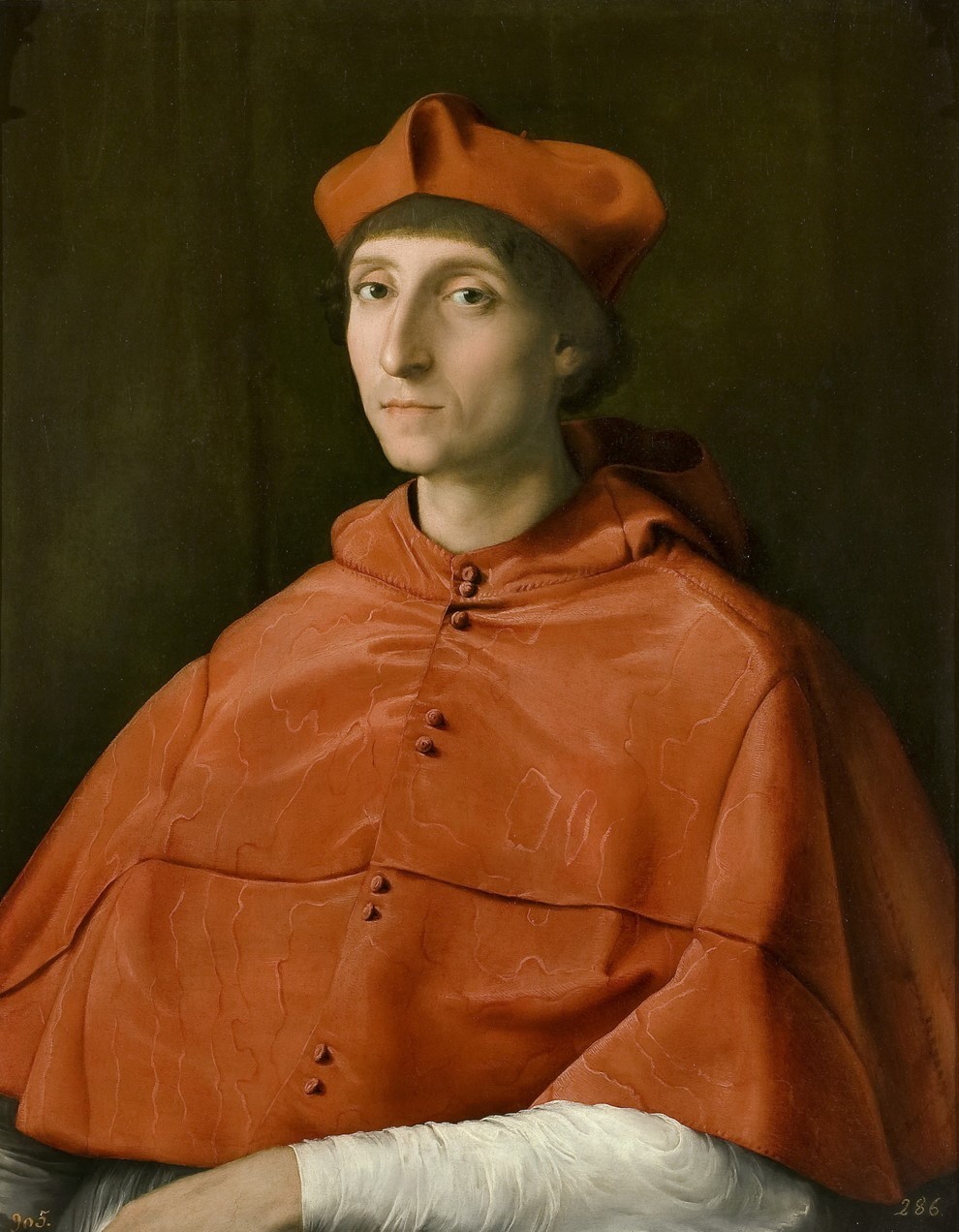
A painting that had previously been attributed to Antonis Mora because of a technique considered unusual for Raphael. Santi, working in Rome, masterfully mastered the art of realism. Many of his colleagues said that he had learned to paint people more real than they really are. The painting was purchased by the Spanish King Charles IV in Rome when he was still a prince.
The copy of the famous “Mona Lisa” made by Leonardo da Vinci’s student. With external resemblance, the work has absolutely no mysteriousness and depth, which made the original the greatest masterpiece of painting, but the interest to this work is huge.
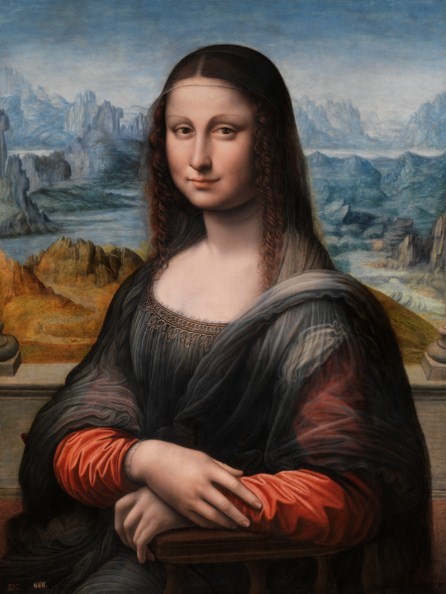
Francisco Goya “Portrait of Charles IV family” (1800 canvas, oil).
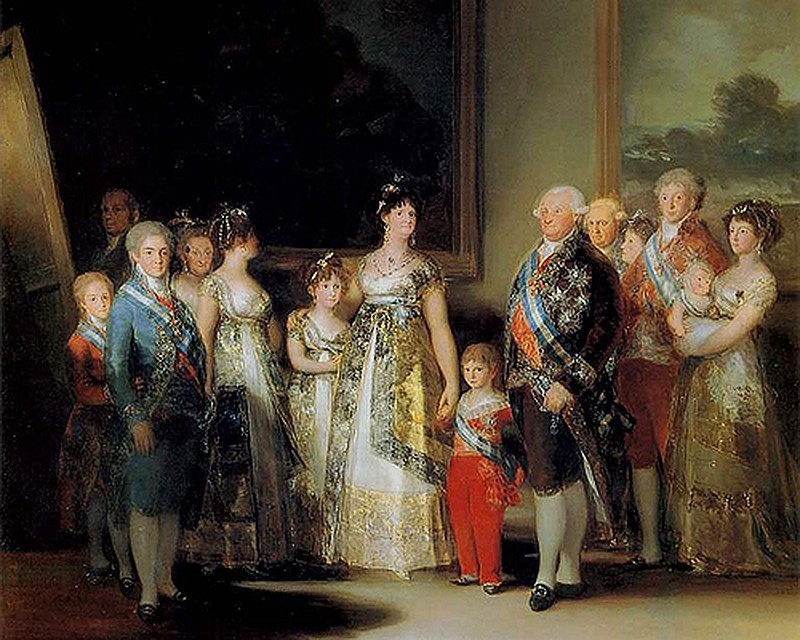
King Charles IV commissioned Goya to paint a group portrait of the royal family. Within a year, the painting was completed. We see luxurious costumes shining with jewels and royal regalia, but the faces of the royal couple testify to a depressing lack of character. The arrogant, arrogant man in the blue camisole on the left is the king’s eldest son, later the tyrant, Ferdinand VII.
Next to him, turning away from him stands his supposed bride, who has not yet received an official offer. Queen Mary Louise, surrounded by her youngest children, is in the center of the painting, while the king stands aside, repeating the situation that has developed in their lives; his entire appearance expresses his respect for the royal wife.
The painter gives an exact psychological characteristic to each of the portrayed. The interpretation of the images of this royal family is extremely truthful. The royal couple expressed neither displeasure nor enthusiasm when they saw the work he presented. Goya himself never received royal orders again.
El Greco ‘The Adoration of the Shepherds’ c. 1614 Oil on canvas, 319 x 180 cm

This painting adorned the altar of the tomb chapel of the artist, El Greco, Monasterio de Santo Domingo de Silos (el Antiguo) is a Cistercian monastery in Toledo. The large vertical canvas depicts a scene of shepherds worshipping the Infant Christ. From the dark space of the painting, the artist rips out two groups with light. The St. Mary with the Infant lying on a dazzling white piece of canvas, surrounded by figures of shepherds submerged in darkness; the second group – angels and cherubim soaring over the Madonna with the Infant and the shepherds.
According to one of El Greco’s disciples, a shepherd in red attire is a self-portrait of the artist in the foreground. The work is remarkable for its amazing complexity of composition and color scheme. We find in the picture a lot of white paints, but really dazzling and radiant shine we see the Baby lying on a diaper. Even the angels flying above him, foreshadowing his fate of the Savior, do not disturb the mysteries of the child’s simple existence.
Sculpture “Group of San Ildefonso” (found in 1623 in Rome)
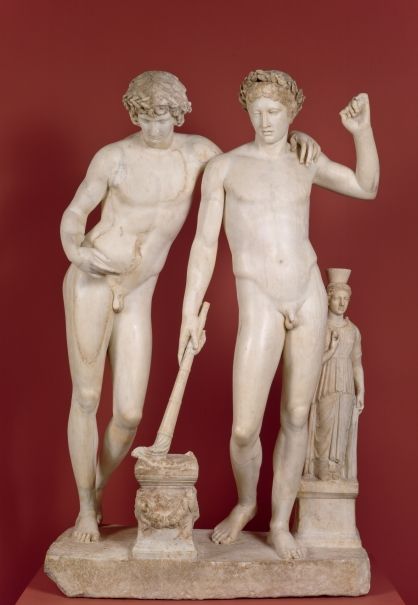
The sculpture represents Orestes and Pylades, whose friendship has become a legend, at the moment when they make a sacrifice in honor of their return from Taurida with the image of Artemis (the statuette presented).
Through this sacrifice, Orestes was purified and freed from the punishment of the gods. Some authors identify these statues as images of the brothers Castor and Pollux. In modern times, the Roman statue of the head of Antinea was added to the left torso. Belonging to the Roman classicism of the Augustus era, this sculptural group is an excellent reflection of its characteristic eclecticism.
The first mention of this group dates back to 1623, when it was in the possession of Cardinal Massimi, at Villa Ludovisi in Rome. After the death of the priest, the item goes to the collection of Queen Christina of Sweden and then to the collection of the first Spanish king from the Bourbon dynasty, Philip V (1683-1746).
Juan De Flandes ‘CrucifiXIon’ 1509-1518, Oil on. Panel, 123 Cm X 169 Cm

A documented work by Juan de Flandes, known only for his Castilla paintings since 1496, when he entered the service of Isabella the Catholic. Juan de Flandes conceived the space of this “Crucifixion” as lowly contemplative and gives it Italian echoes, also because of the way in which the characters are arranged: with the predominance of straight lines that give monumentality to the entire ensemble. To draw attention to the crucified Christ in the center, a semicircle of figures is created around him against a landscape background.
The Flemish artist’s originality in presenting this iconographic theme is enhanced by his mastery of technique, which is evident in the form in which he reproduces the characteristics of objects such as gems and corals scattered on the ground.
Finding the Prado Museum is easy enough, it is in the heart of Madrid:
– Atocha Metro stop – you can get directly from the airport. From here to the museum a few hundred meters, you can find signs that say “Museo del Prado”.
– Buses – 9, 10, 14, 19.
– Near the museum, there is a tourist bus stop, not far from the Kibela square, the famous “Retiro” park.
The building of the museum can be seen from afar, it is majestic and monumental, like everything in Madrid.
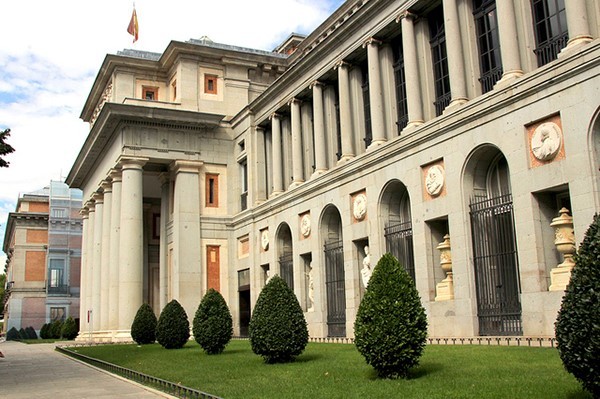
Museum opening hours: from 10:00 am to 8:00 pm (on Sundays and holidays the museum closes one hour earlier).
Three days a year (January 1, May 1 and December 31), the Prado does not accept visitors. And on January 6, 24 and 31 December, it is only open until two hours.
The price of a regular ticket to enter and view the main exhibition is 14 euros. Children under 18 are exempt from the fee. Students with an international ticket have a 50% discount.
You can buy the ticket at the Prado ticket office and on the museum’s homepage. But there is no need to rush to spend money. Every day tourists have the opportunity to visit the Prado absolutely free. Two hours before closing, the museum’s ticket office gives free tickets to everyone. By this time, the museum is gathering an impressive line. Don’t be afraid of it, the queue melts very quickly (15-20 minutes).
You have to pay 3.50 euros for using the audio guide. The free map has a description of the main masterpieces, the audio guide will be useful for those who are really interested in painting.
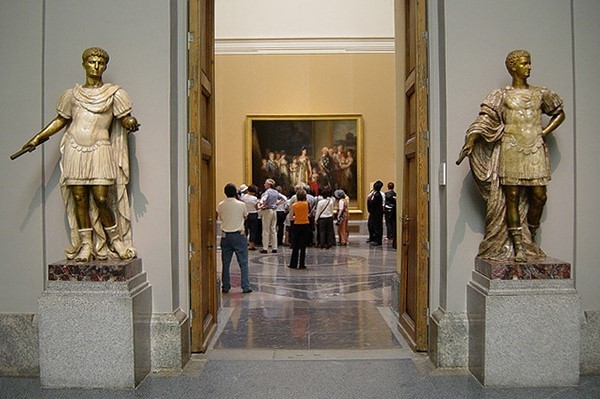
Every visitor to the Prado is under strict control. Bags, umbrellas, backpacks must be left in the wardrobe.
It’s forbidden to take pictures in the museum, but the staff looks through their fingers. Only owners of large cameras will have to turn them in. Visitors take active photos with phones and tablets.
There is a good cafe in the museum, which will be useful for those who want to spend the whole day in Prado.
Every visitor can leave a written or oral review of their visit to the museum, and there are several electronic devices at the exit.
The National Museum of Madrid Prado is a landmark in Madrid that must be visited to see the work of outstanding painters. It has the most complete exhibition of paintings from ancient times to the present day, so a visit to this museum will be remembered by every art lover for many years to come.






